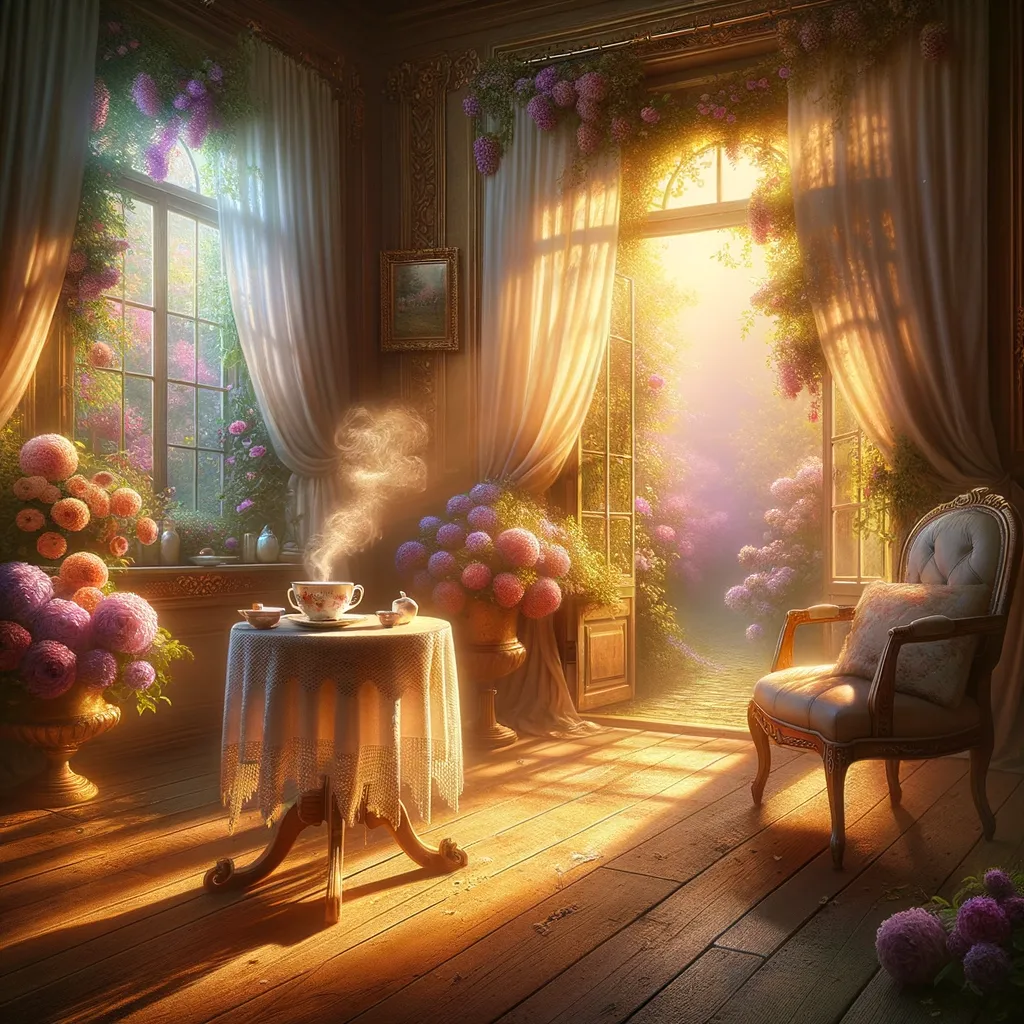Unraveling Secrets: A Journey Through Lace and Legacy
In the dim light of a forgotten attic, a young soul stumbles upon a trove of family history, where dust motes dance like memories in the sunbeams. Among old quilts and delicate lace, the legacy of a grandmother’s artistry beckons, whispering secrets of love and tradition that span generations. Clumsy hands once hesitated to embrace the craft, retreating to simpler joys, but a hidden wooden box ignites a spark of inspiration, revealing unfinished pieces that long to tell their stories. As threads intertwine, the realization dawns: the journey of creation holds more beauty than perfection, weaving a tapestry of connection between the past and present. In that golden hour, the act of crafting transforms into a celebration of resilience and self-discovery, inviting the heart to honor both legacy and individuality.
In the memory of March 31, 2011, I find myself standing in the dim light of my grandmother’s attic, surrounded by a treasure trove of forgotten relics. Dust motes dance in the sunbeams that pierce through the small window, illuminating a world that seems suspended in time. Old quilts lie piled high, each one telling stories of love and labor, stitched together with threads of resilience and tradition. Among them, the delicate lacework catches my eye—a testament to a craft that has been passed down through generations, whispering secrets of artistry and patience.
Lace-making, my grandmother’s passion, was not merely a skill but an act of devotion. As a child, I watched her fingers move deftly, weaving intricate patterns that seemed to breathe life into the very fabric. Each loop and twist felt like a spell, casting a magical aura over the room. I remember her explaining the origins of the craft, how her grandmother had learned it from a woman in the village who had once crafted lace for nobility. The stories wrapped around the lace like the very threads she used, binding our family’s history to a time when artistry was revered.
Despite my admiration, I found myself clumsy with the needle and thread, my fingers fumbling over the delicate work that required not just skill but a certain reverence. I would often abandon the task in frustration, retreating to the safety of crayons and paper—simple tools that didn’t demand the same precision. Yet, I held onto the dream of mastering this craft, of one day creating a piece that would make my grandmother proud. The weight of expectation felt heavy, not just from her but from the generations that had come before me, each of whom had stitched their essence into the fabric of our lineage.
On that day in March, the attic became a sanctuary of nostalgia and longing. I found a wooden box tucked away in a corner, its surface etched with swirling designs that echoed the lace patterns I had admired for years. Inside lay unfinished pieces, each one a fragment of a story yearning to be completed. I could almost hear my grandmother’s voice guiding me, urging me to pick up the thread, to try once more. The act of creating, I realized, was not just about the final product but about the journey and the connections woven into each stitch.
As I sat there, surrounded by the weight of history, I felt a surge of inspiration. The thought that perhaps I didn’t have to master the craft to appreciate it struck me as profound. The beauty of lace-making lay in the process—the patience it demanded, the mistakes that became lessons, and the love that infused each piece with meaning. I picked up a needle, tentative yet determined, and began to experiment, letting the threads guide my hands rather than forcing them to conform to a perfect pattern.
With each attempt, I discovered new textures and shapes, weaving my own narrative into the tapestry of my family’s legacy. The threads became metaphors for connection; they intertwined not only the past but also the present and future. I could see how each generation had added their own flair, their own imperfections, to the craft, creating a living history that was as much about evolution as it was about tradition. In that moment, I felt a profound sense of belonging, as if the very fibers of the lace were stitching my heart to my ancestors.
As the sun began to set, casting a golden hue across the attic, I realized that the act of creating was a celebration of the imperfect. My grandmother’s legacy was not about producing flawless works of art but about embracing the journey of creation itself. The laughter, the frustration, the moments of joy and sorrow—all of it was woven into the fabric of our family story. It was a tapestry of life, rich with the colors of experience, and I was now an integral part of it.
Months passed, and I continued to explore this newfound passion. Each lace piece I created became a conversation with my grandmother, a dialogue that transcended time. I began to understand that crafting was not merely a skill but a vessel of memory, a way to honor those who had come before me. It was a reminder that creativity often blooms in the spaces where expectations are left behind, where the heart can truly express itself.
As I reflect on that March day, I am left with a lingering thought: what if mastery is not the ultimate goal, but rather the courage to embrace the journey, to celebrate our attempts and our failures? Each thread of lace, a lesson in resilience, invites us to ponder the intricate dance between tradition and personal expression. It beckons us to ask ourselves: how do we honor the legacies of those who came before us while also forging our own paths?
In the delicate interplay of threads and stories, the true artistry lies not in perfection but in the courage to weave one’s own journey into the fabric of legacy.



